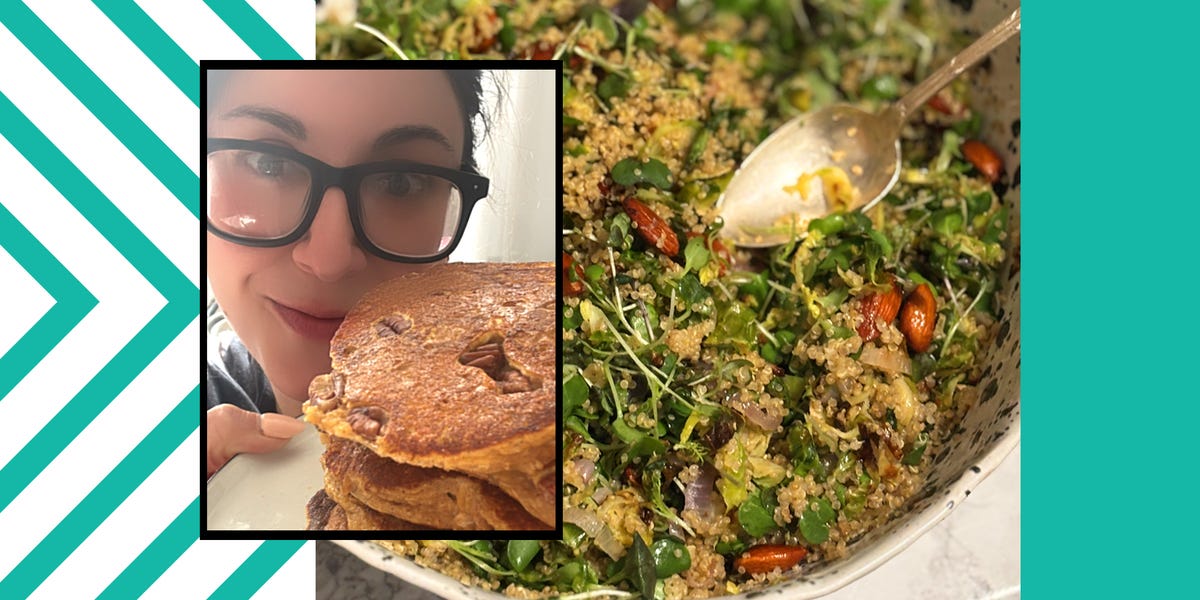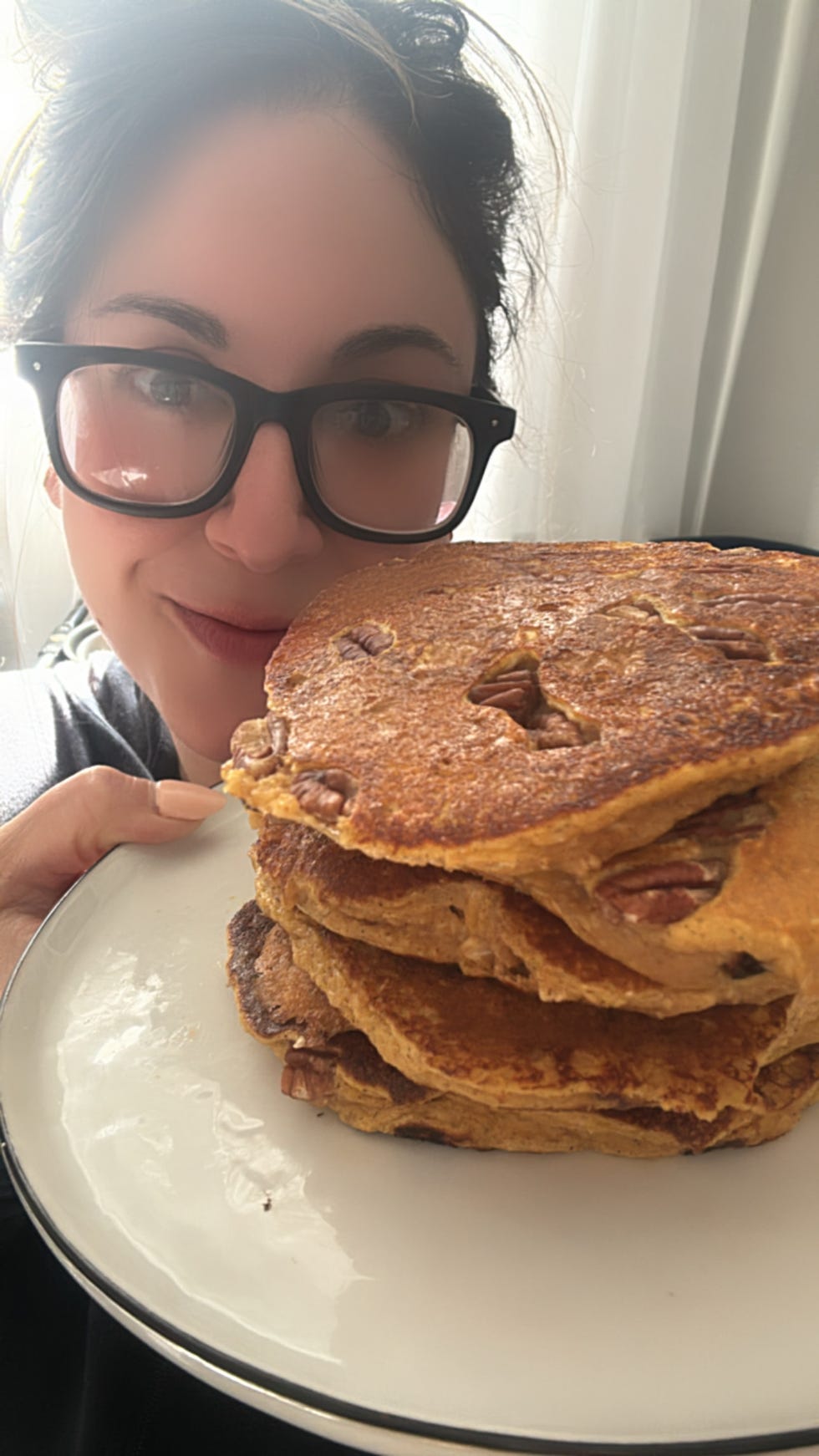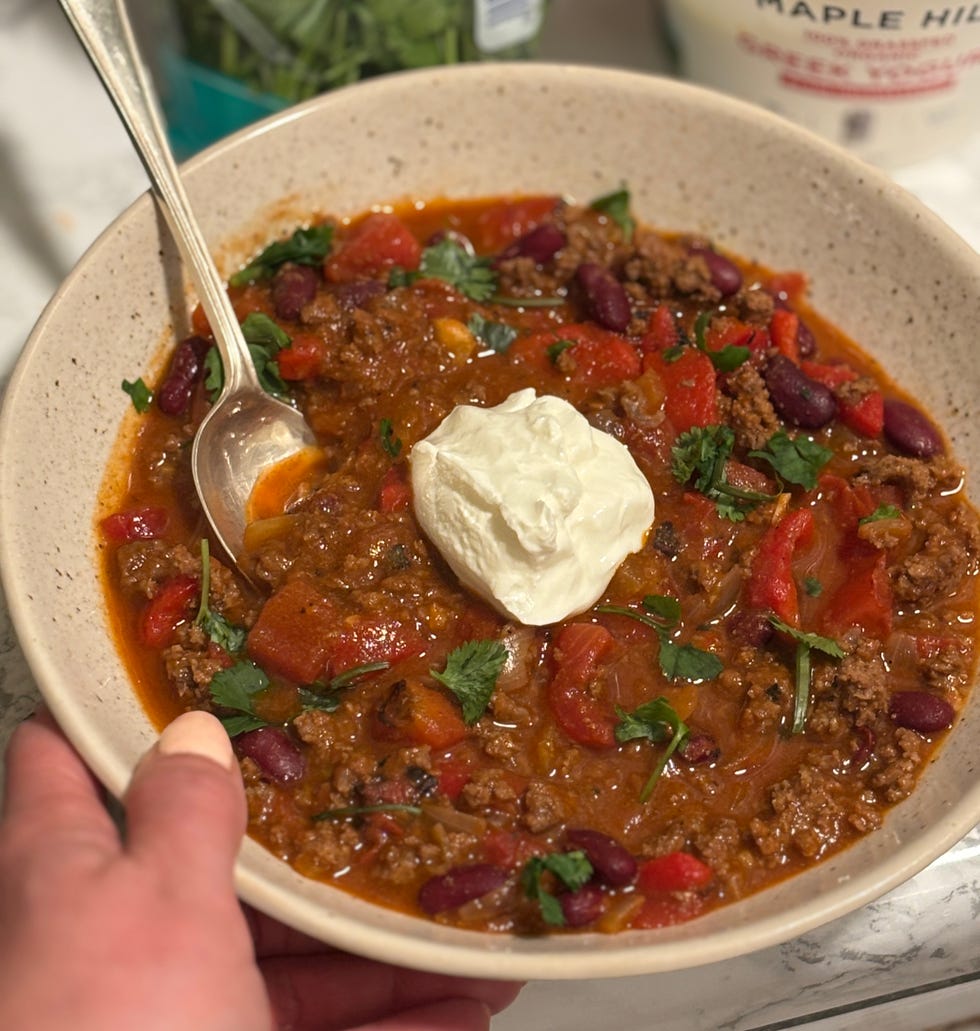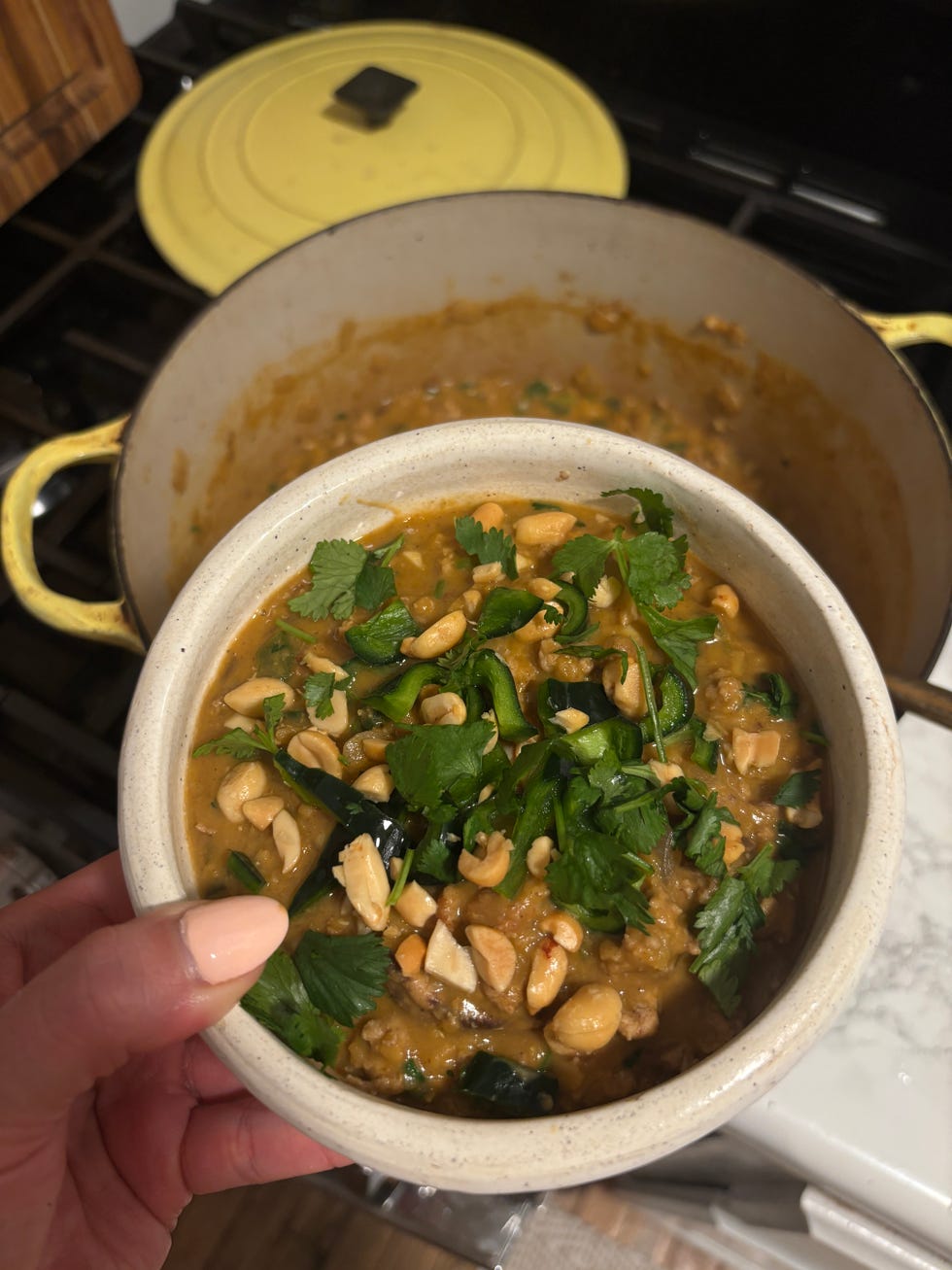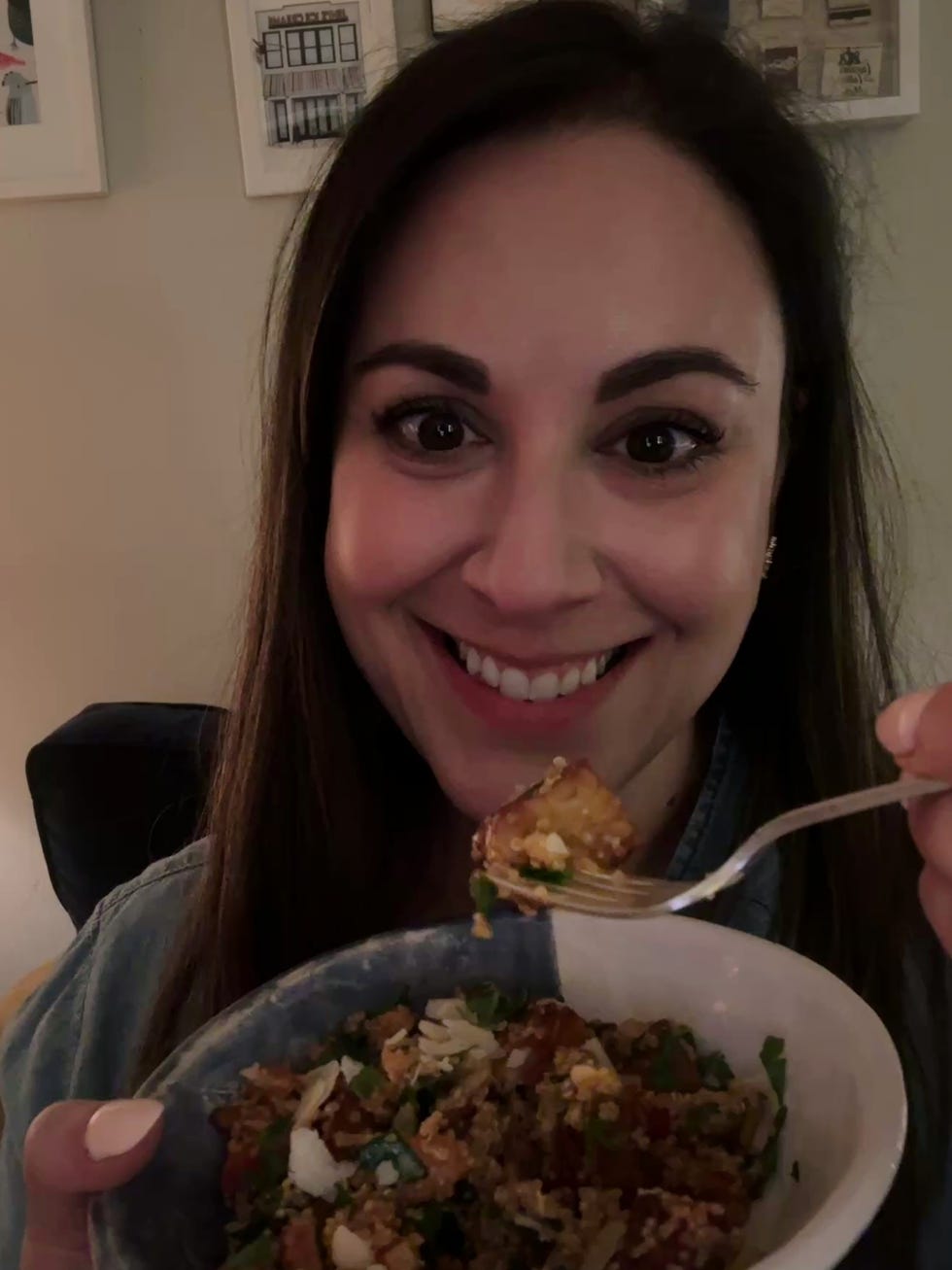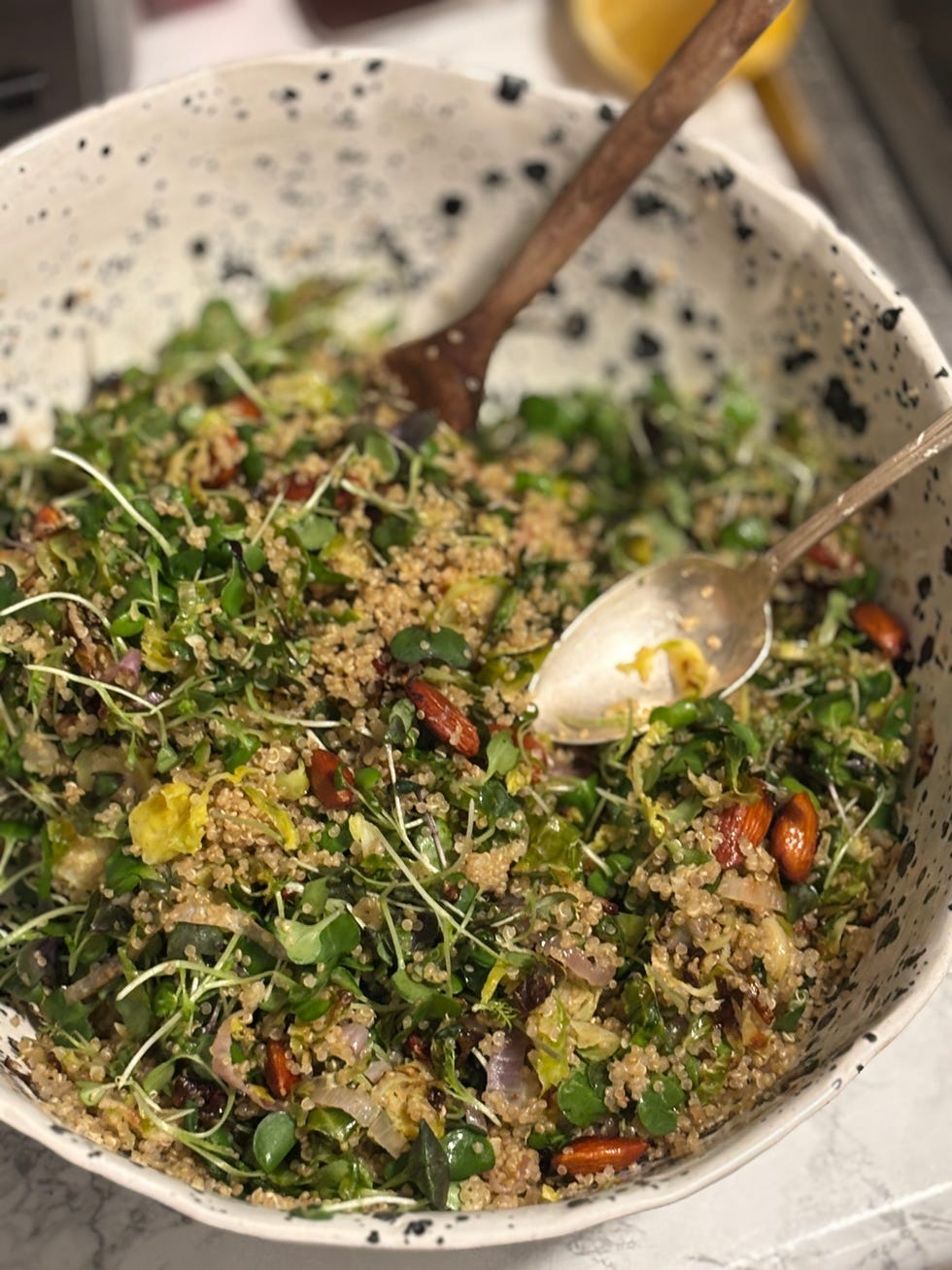As a food writer, my days are filled with grocery runs, recipe testing, and long days behind the computer. This also means (unfortunately) sporadic eating habits. A coffee to start the day, a few bites of whatever I’m working on, and suddenly it’s 3 p.m.—and I haven’t had a real meal yet, and I’m cranky as hell. Cooking for a living doesn’t always mean you eat well. In my case, it’s often been the opposite.
Lately, though, signs of my body needing support were showing up beyond my chaotic meal schedule. My energy was tanking, my hair and nails felt brittle, and I knew something was off. So I booked an appointment with a nutritionist to get a clearer picture. Turns out, I had been consuming about half of my daily needed protein intake each day—despite thinking I had the “high-protein” trend down. (Since high-protein has become more mainstream, I’ve trained myself to love cottage cheese and hard-boiled eggs, have multiple protein powders in my pantry at the ready, and make some iteration of a turkey meatball or meatloaf every week.) Armed with that intel and curious about how a few tweaks might improve how I felt, I decided to take action.
I decided to switch things up and focus on something I hadn’t done before: high-protein dinners, focusing on muscle gain and overall better nutrition. Plus, I wanted to see if my late-night sugar cravings would finally disappear.
That’s when I stumbled on the Women’s Health High-Protein Meal Prep Manual, which seemed like the perfect tool to help me stay consistent. Here’s how it went, what I learned about hitting my protein goals, and whether the challenge actually made a difference.
Want to try it yourself? Sign up for WH+ for exclusive access to the High-Protein Meal Prep Manual and a customizable weekly plan to hit your goals—without the guesswork.
Gearing Myself Up For A Big Change
Committing to this challenge meant rethinking my meal routines (or lack thereof). I printed out the colorful manual, made a grocery list, and dutifully headed to the store to fill my cart with high-protein foods that I seldom cooked like tempeh, lentils, and quinoa.
One of the reasons I don’t cook often is because of my tiny kitchen. I have exactly 10.5 inches of counter space in my whole kitchen. It doesn’t leave a lot of room to slice and dice intricate recipes, but I make it work when I have to. That’s why I was pleasantly surprised at how little space I needed to prep these recipes plus how quickly they came together—faster than the times listed in the recipes.
The plan’s recipes were straightforward, creative, and super easy to follow. I made mostly all of the dinner recipes in the manual, a couple of the lunch recipes, like the Quick Three-Bean Bison Chili, and even branched out to the breakfast recipes during week two because I love nothing more than breakfast for dinner.
The Turkey and Red Lentil Stew was my absolute favorite; I made it twice during the 30 days, a total knockout on a cold, rainy evening with its complex curry flavors, swirl of peanut butter, and sprinkle of cilantro. My other favorite was the Quinoa Romesco and Tempeh—it came together in 20 minutes on a night I really didn’t feel like cooking and it had nearly 40 grams of protein to keep me full but not uncomfortably so before bed.
I meal-prepped here and there, but mostly I grabbed the ingredients I needed for three dinners at a time and cooked when I ran out of leftovers. Having a game plan tacked to my fridge made dinnertime decisions effortless and having the ingredients already in my house didn’t give me an excuse to order pizza.
I also started tracking my protein intake more intentionally, aiming for at least 30 grams per meal (as recommended by nutritionist Willow Jarosh, RDN, the mastermind behind the manual) and using the handy paper tracker that came with the meal plan when downloaded.
Related StoriesAn Immediate Energy Shift
By the end of the first week, I noticed a clear shift. I intentionally balancing my protein intake and sticking to three meals a day, my mood and energy levels evened out. I wasn’t cranky in the afternoon, I wasn’t eating a late lunch at 4 p.m. and an even later dinner at 10 p.m.. I fell asleep more easily since I was eating enough, early enough before bed. Overall, I just felt way more balanced—no daily crashes.
When I mentioned these changes to Caroline Thomason, RD, CDCES, a dietitian and diabetes educator in Washington, D.C., she wasn’t surprised. “Think of protein as a slow drip of energy, delivering a steady, controlled release that keeps you feeling full and fueled for hours,” she told me. “Unlike carbs, which hit your system in a rush — giving you quick energy but fading fast — protein takes its time to break down, keeping blood sugar stable and hunger at bay.”
Thomason said this is the type of feedback she hears over and over again from her clients. “They thought they were eating enough protein for their needs before, and when they consistently focus on it, they feel better.” I was glad to know I wasn’t the only one and after the first week, I couldn’t wait to see what other changes were to come.
One Step Forward, Two Steps Back
By week two, the inevitable slip-ups crept in. One night, after a long day, I’d run out of leftovers and had zero desire to cook. So I reached for the easiest dinner I could think of: a bagel with butter. And after 10 solid days of nailing my protein goals, I felt it—still a little hungry when I went to bed and absolutely ravenous by 5 a.m.
Related Stories
Another off-plan moment? A dinner out with a friend that turned into plates of pasta, grilled calamari, and glass after glass of red wine. I woke up in the middle of the night with brutal heartburn—something that hadn’t happened all month.
In both instances, instead of berating myself the next day, I gave myself a little grace and moved on. I’m working on not being so hard on myself in general, and reminded myself that going out for a fancy dinner or eating a buttered bagel did not mean that I failed the challenge. Life happens.
Feeling The Shift—Inside And Out
By weeks three and four, the changes felt undeniable. I wasn’t just cooking dinners that kept me satisfied—I was counting on them for lunch leftovers the next day, too. Without even realizing it, this way of eating became my default.
My workouts—one high-energy dance class and one reformer pilates session per week, 10,000 steps per day, plus regular cleaning marathons (which according to my Oura ring, counts as physical activity)—stayed the same. But my body changed. I saw and felt actual muscle definition in places I hadn’t before. Even my Pilates instructor commented on how much stronger I looked on the reformer.
By this point in the challenge (in addition to the body changes), my energy levels were the biggest notable difference. I felt steadily fueled all day, slept better, and actually liked this way of eating. The variety of ingredients in the WH manual, the structure of hitting a certain amount of protein at dinner—it worked for me. It clicked that I’m someone who thrives on structure and a plan. Saying no to late-night tacos or a second cocktail felt less like deprivation and more like knowing what helps me feel my best, which felt like the biggest win of all.
What A Month Of High-Protein Dinners Taught MeI’m better when I’m prepared. Taking 20 minutes to meal prep a few nights a week paid off tenfold. Having protein-packed dinners (and next-day lunches) ready to go saved me from decision fatigue and late-night snacking.Protein = muscle gains. I’d always heard about the connection, but seeing and feeling it firsthand was the game-changer. Pairing intentional meals with my usual workouts led to visible strength improvements I hadn’t experienced before.Overeating wasn’t an issue. Surprisingly, eating bigger, protein-rich meals didn’t lead to feeling stuffed. As Thomason explains, protein naturally flips that ‘I’m full’ switch—unlike carbs, which can leave you reaching for more. “Our body has a natural satiety, signaling tied to protein intake, and we get full and satisfied after a certain amount. An easy example to imagine: it’s really hard to overdo chicken breast or steak. We have a natural ‘off button’ with these foods,” she says.
Sign up for WH+ for a customizable meal prep plan to crush your nutrition and fitness goals.
How I Made It Stick (And How You Can, Too)Put it where you can see it. I found that printing out the entire manual and hanging it on my fridge not only encouraged me to stay on track but kept all the recipes in one handy place for when it was time to cook. Since I always had recipes literally at my fingertips, I was saved by my usual Pinterest paralysis of “What should I make tonight?” and instead turned to the recipes that were right in front of me.Stock up on snacks. Inspired by the plan, I organized my fridge and pantry with high-protein snacks in clear containers—easy to grab, no excuses. A few pretty, organized glass containers later, and I had no excuse not to grab a snack that would help me stay satiated and on track.Prioritize dinner timing. Making sure I ate a real meal at a reasonable hour was key. I left behind my old tactics of eating too much too late due to a missed lunch, or not eating dinner at all. I slept better because I didn’t go to bed overly full or wake up in the middle of the night because I was super hungry.Related Stories
